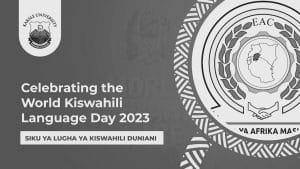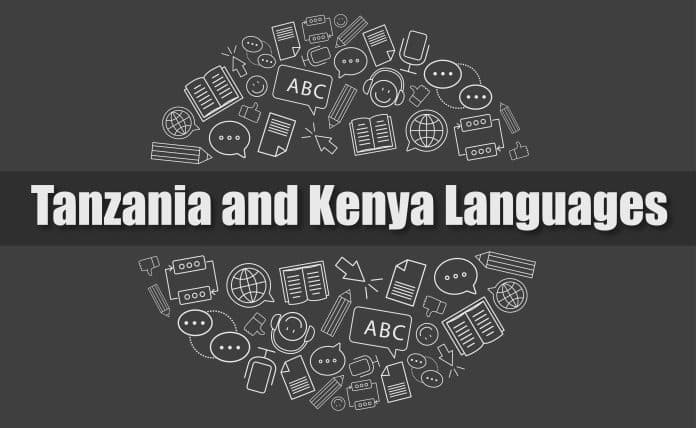Exploring the Fascinating Linguistic Diversity of Tanzania and Kenya
Tanzania and Kenya are two East African countries known for their diverse cultures, wildlife, and landscapes. However, what many people may not know is that these countries are also home to a rich linguistic diversity. With over 130 languages spoken in Tanzania and 68 languages spoken in Kenya, this region is a linguistic treasure trove. In this article, we will explore the language spoken in Kenya and Tanzania, including their official languages, indigenous languages, and the cultural significance of language diversity.
Introduction to the Linguistic Diversity of Tanzania and Kenya
Tanzania and Kenya are countries that are home to a diverse range of ethnic groups and cultures, each with their own unique language. The linguistic diversity of these countries is a reflection of their rich history and cultural heritage. In Tanzania, there are over 130 languages spoken, while in Kenya, there are 68 languages spoken. These languages can be broadly classified into two categories: official languages and indigenous languages.
The Official Languages of Tanzania and Kenya
The official languages of Tanzania are Swahili and English. Swahili is the most widely spoken language in the country, and it is recognized as the national language. The use of Swahili in Tanzania can be traced back to the 18th century when it was used as a lingua franca for trade along the East African coast. Today, Swahili is spoken by over 100 million people in East and Central Africa, making it one of the most widely spoken languages on the continent.
In Kenya, the official languages are English and Swahili. English is widely used in education, government, and business, while Swahili is the national language and the lingua franca of East Africa. The use of Swahili in Kenya dates back to the 19th century when it was used as a common language for trade and communication among different ethnic groups.
Indigenous Languages of Tanzania
Tanzania is home to a large number of indigenous languages, with over 130 languages spoken across the country. These languages can be broadly classified into four language families: Bantu, Cushitic, Nilotic, and Khoisan. The Bantu language family is the largest and most diverse, with over 500 different Bantu languages spoken across Africa. In Tanzania, the Bantu language family is represented by languages such as Sukuma, Nyamwezi, Chaga, and Haya.
The Cushitic language family is spoken in the Horn of Africa and parts of East Africa, including Tanzania. In Tanzania, Cushitic languages such as Somali, Rendille, and Boni are spoken in the northern and eastern regions of the country. The Nilotic language family is spoken in South Sudan, Uganda, Kenya, and Tanzania. In Tanzania, the Nilotic language family is represented by languages such as Maasai, Datooga, and Kalenjin. The Khoisan language family is spoken by a small group of people in southern Africa, including Tanzania.
Indigenous Languages of Kenya
Kenya is also home to a large number of indigenous languages, with 68 languages spoken across the country. Like Tanzania, these languages can be broadly classified into four language families: Bantu, Cushitic, Nilotic, and Khoisan. The Bantu language family is the largest and most diverse, with over 500 different Bantu languages spoken across Africa. In Kenya, the Bantu language family is represented by languages such as Kikuyu, Luhya, and Meru.
The Cushitic language family is also spoken in Kenya, with languages such as Somali, Borana, and Rendille spoken in the northern and eastern regions of the country. The Nilotic language family is spoken in South Sudan, Uganda, Tanzania, and Kenya. In Kenya, the Nilotic language family is represented by languages such as Maasai, Kalenjin, and Luo. The Khoisan language family is spoken by a small group of people in southern Africa, including Kenya.
Swahili: The Lingua Franca of East Africa

Swahili is a Bantu language that is widely spoken in East Africa, including Tanzania, Kenya, Uganda, and the Democratic Republic of Congo. It is also spoken in parts of Rwanda, Burundi, and Mozambique. Swahili is the national language of Tanzania and Kenya, and it is recognized as an official language in Uganda and the Democratic Republic of Congo.
Swahili is a unique language that has been shaped by the diverse cultures and languages of East Africa. It is a language that is easy to learn and understand, making it a popular choice for communication across different ethnic groups and cultures. Swahili has also been influenced by Arabic, due to the long history of trade and commerce along the East African coast.
Language Policies and Education in Tanzania and Kenya
The governments of Tanzania and Kenya have implemented language policies aimed at promoting the use of Swahili and English as official languages, while also preserving and promoting the use of indigenous languages. In Tanzania, Swahili is the language of instruction in primary schools, while English is introduced as a subject in secondary schools. The government has also established language centers and institutes to promote the use and development of indigenous languages.
In Kenya, the government has implemented a similar language policy, with Swahili being the language of instruction in primary schools and English being introduced as a subject in secondary schools. The government has also established language centers and institutes to promote the use and development of indigenous languages. Despite these efforts, there are still challenges to implementing these policies, such as a lack of resources and trained personnel.
Language Revitalization Efforts in Tanzania and Kenya

In recent years, there has been a growing interest in revitalizing and promoting indigenous languages in Tanzania and Kenya. This has led to the establishment of language documentation and revitalization projects aimed at preserving and promoting the use of these languages. These projects involve working with local communities to document and record their languages, as well as promoting language use through education and cultural events.
In Tanzania, there are several language documentation and revitalization projects, such as the Endangered Languages Documentation Programme and the Tanzanian Language Board. In Kenya, there are also several language documentation and revitalization projects, such as the Maasai Language and Culture Project and the Institute of African Studies at the University of Nairobi.
Cultural Significance of Language Diversity in Tanzania and Kenya
Language diversity is an important aspect of the cultural heritage of Tanzania and Kenya. Indigenous languages are an important part of the identity and culture of local communities, and they play a vital role in preserving traditional knowledge and practices. Language diversity also promotes cultural understanding and tolerance, as it allows people from different ethnic groups to communicate and share their cultures.
Furthermore, language diversity is also important for biodiversity conservation. Many indigenous languages have specific words and terms for different plants, animals, and ecosystems, reflecting the deep knowledge and understanding that local communities have of their environment. This knowledge is essential for effective biodiversity conservation and management.
Language Preservation and Documentation Projects
Language preservation and documentation projects are essential for preserving and promoting the use of indigenous languages in Tanzania and Kenya. These projects involve working with local communities to document and record their languages, as well as promoting language use through education and cultural events.
In Tanzania, there are several language preservation and documentation projects, such as the Endangered Languages Documentation Programme and the Tanzanian Language Board. In Kenya, there are also several language preservation and documentation projects, such as the Maasai Language and Culture Project and the Institute of African Studies at the University of Nairobi.
Celebrating and Appreciating Linguistic Diversity in Tanzania and Kenya
Tanzania and Kenya are countries that are home to a rich linguistic diversity, with over 130 and 68 languages spoken, respectively. This linguistic diversity is a reflection of their rich history and cultural heritage, and it plays a vital role in preserving traditional knowledge and practices. The official languages of Tanzania and Kenya are Swahili and English, while the indigenous languages can be broadly classified into four language families: Bantu, Cushitic, Nilotic, and Khoisan.
While there are challenges to promoting and preserving indigenous languages, there are also many language revitalization and documentation projects aimed at promoting the use and development of these languages. These projects involve working with local communities to document and record their languages, as well as promoting language use through education and cultural events.
Overall, the linguistic diversity of Tanzania and Kenya is a fascinating aspect of their culture and heritage, and it is something that should be celebrated and appreciated. By preserving and promoting these languages, we can ensure that they continue to be a vital part of the cultural heritage of these countries for generations to come.
For more articles related to Tanzania languages click here!

































